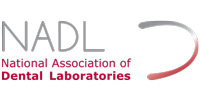Dental Laboratory Leaders Clarify FDA Regulations on Implant Abutments at Conference Sessions
Dental Laboratory Leaders Clarify FDA Regulations on Implant Abutments at Conference Sessions Tallahassee, Fla. March 16 – Hundreds of dental laboratory owners and technicians from around the country had an opportunity to learn about Food and Drug Administration regulations on
Dental Laboratory Leaders Clarify FDA Regulations on Implant Abutments
at Conference Sessions
Tallahassee, Fla. March 16 – Hundreds of dental laboratory owners and technicians from around the country had an opportunity to learn about Food and Drug Administration regulations on dental implant abutments when top leaders from the National Association of Dental Laboratories (NADL) recently presented on the latest updates.
NADL’s Bennett Napier, CAE, and Eric Thorn, Esquire, led “FDA, Implants/Abutments and Audits,” sessions at two of its annual conferences, Vision 21 in Las Vegas Jan. 21-23 and Winter Daze in Chicago Feb. 27. The presentation focused on FDA regulations that apply to in-house computer-aided design and manufacturing (CAD/CAM) milling of abutments by dental laboratories.
“Part of NADL’s mission is to inform our members on issues of regulatory compliance in the dental laboratory industry,” says Thorn. “In our session, we aimed to help clarify some of the disparate information in the marketplace and share FDA’s statements.”
According to Thorn and Napier, in the past year, the FDA has increased its enforcement activity relating to the CAD/CAM milling of implant abutments and has sent compliance letters to dental laboratories and milling centers. In addition to FDA’s increased enforcement activity, some market participants began to publicize aspects of FDA regulatory requirements relating to CAD/CAM milling of abutments for marketing purposes.
The lab is not allowed to modify stock abutments that are cleared as part of the 510(k). Taking a straight abutment and changing it to an angled abutment is a new design and would not be in compliance with FDA regulations. However, labs can mill the top of an abutment blank by hand without a 510(k).
“Through this session, we stressed not only the importance of dental laboratory owners and technicians staying abreast of FDA regulations, but also how important it is for dentists to stay informed about standards,” says Napier.
NADL’s “What’s In Your Mouth?” campaign raises public awareness of regulations, standards, transparency, safety issues and the important role that the dental laboratory and dental laboratory technician play as part of the oral health care team.
For dentists to ensure their patients are getting the quality restorations they deserve, NADL suggests dentists find out if their state requires minimum dental laboratory standards and that dentists stay up-to-date with legislative updates.
# # #


